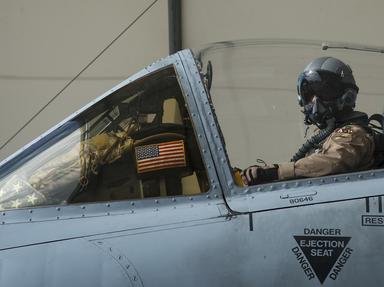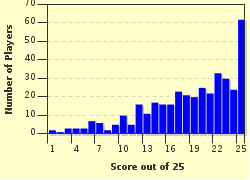Quiz Answer Key and Fun Facts
1. (A) 1944-1948: What was the first US-designed jet fighter?
2. (B) 1939-1947: What aircraft was the 'Memphis Belle', the first USAAF bomber to complete a tour of operations over Western Europe?
3. (C) 1942-54: Which WW2 US Navy fighter was nicknamed 'Whistling Death' by the Japanese?
4. (D) 1939-1945: Which US Navy dive bomber played a vital part turning the tide of the Pacific War, sinking several Japanese carriers at the battles of Coral Sea and Midway in 1942?
5. (E) 1976-present: Which air superiority fighter was designed in response to the potential threat posed by the Soviet Union's MiG-25?
6. (F) 1978-present: Which lightweight fighter has proved itself to be an effective multi-role aircraft, and is an extremely successful export?
7. (G) 1950-1974: Which stalwart of the USAF's transport fleet was known as 'Old Shaky'?
8. (H) 1956-present: In 2006, which tactical airlifter became only the fifth aircraft in history to be in continual operational service for 50 years with its original primary customer - in this case, the USAF?
9. (I) 1944-1972: Which long-serving attack aircraft was the fastest American bomber of WW2?
10. (J) 1915-1925: What was the affectionate nickname of the ubiquitous Curtiss JN-4 biplane trainer?
11. (K) 1957-present: Which veteran aircraft of the USAF has been in service as an inter-flight refuelling tanker for more than fifty years?
12. (L) 1941-1945: Which WW2 bomber still holds the record for the most-produced US military aircraft in history?
13. (M) 1942-1957: Which mediocre fighter was transformed into the best fighter of WW2 when powered by a Rolls-Royce engine?
14. (N) 1936-1962: Which biplane primary trainer served with great utility throughout WW2, particularly with the US Navy?
15. (O) 2005-present: Which V/STOL transport aircraft can operate in a multi-role capacity, both as a fixed-wing aircraft and a helicopter?
16. (P) 1934-1942: What was the nickname of the diminutive P-26 fighter?
17. (Q) 1941-1950: Which light monoplane was employed as a pilotless drone aircraft during WW2?
18. (R) 2005-present: Which air superiority fighter uses stealth technology and is claimed to be the most effective of its type in the world(2008)?
19. (S) 1949-1960: With which jet fighter did the Allies assert air superiority over the Soviet-built MiG-15 during the Korean War?
20. (T) 1942-1955: Which aircraft was the largest and heaviest single-engined fighter of WW2, affectionately known as 'The Jug' by its pilots?
21. (U) 1959-present: What was the official designation of the Iroquois helicopter, made famous in the Vietnam War?
22. (V) 1957-1982: What was the name of the McDonnell F-101 supersonic long-range fighter with nuclear capability, that was operated by the USAF throughout the Vietnam War?
23. (W) 1941-1945: Which fighter aircraft became famous as the type used by the American Volunteer Group, 'The Flying Tigers', during WW2?
24. (X) 1946-1948: With which rocket-powered aircraft did Captain Charles 'Chuck' Yeager become the first man to break the sound barrier in level flight?
25. (Y) 1936-1947: The Yale trainer aircraft was the US Navy's designation for the USAAF's AT-6 Texan.
Source: Author
Plumbus
This quiz was reviewed by FunTrivia editor
Leau before going online.
Any errors found in FunTrivia content are routinely corrected through our feedback system.

